Kitchen Organization Tiny House: Drawer Guide
Master kitchen organization in a tiny house with our drawer guide. Explore smart storage solutions for a small kitchen and end clutter for good.
Drawer Perfection: The Ultimate Guide to Kitchen Organization in a Tiny House
In a tiny house kitchen, every single drawer is a piece of high-value real estate. There is no room for the dreaded “junk drawer”—that chaotic abyss of random gadgets, tangled chargers, and miscellaneous hardware. When you have limited counter space and minimal cabinetry, functional drawers are not a luxury; they are the absolute foundation of a workable kitchen. The frustration of not being able to find the vegetable peeler or battling a stuck utensil drawer is amplified in a small footprint. This is where mastering kitchen organization tiny house becomes a game-changer.
At NeatTinyHome.com, we believe that a calm and efficient home starts with its smallest spaces. This guide will provide you with a comprehensive system to transform your kitchen drawers from sources of stress into models of efficiency. We’ll go beyond just telling you to buy a tray; we’ll show you how to declutter, zone, and implement creative storage solutions small kitchen owners swear by. By following these steps, you will not only create beautifully organized drawers but also a more joyful and seamless cooking experience in your tiny home.

Step One: The Great Drawer Empty-Out
You cannot organize a drawer without knowing exactly what’s in it. As with any organization project, the first step is to completely empty every single kitchen drawer you intend to organize. Don’t just do one at a time. Pull everything out from all of them and place it on your countertop or dining table. This creates a clean slate and allows you to see the full inventory of your kitchen tools. You will almost certainly find duplicates you didn’t know you had and gadgets you haven’t used in years. This visual representation is a powerful motivator for the next crucial phase: decluttering.
Once everything is out, give the inside of your drawers a thorough cleaning. Then, it’s time to edit your collection. Be ruthless. Pick up each item and ask yourself: Do I use this regularly? Do I have duplicates of this? Is it broken? Does it even work well? The goal of kitchen organization tiny house is to keep only the most functional and necessary items. That novelty avocado slicer you used once might not be worth the precious real estate it occupies. Create piles for “Keep,” “Donate,” and “Trash.” This single step is often the most impactful, as it reduces the sheer volume of items you need to find a home for.
Step Two: Strategic Zoning for a Functional Flow
Before you put a single item back, you need a plan. This is where you assign a “zone” or purpose to each drawer. Think about how you actually work in your kitchen. This is one of the most important storage solutions small kitchen owners can implement for efficiency. Here’s a logical way to approach it:
- The Prep Zone: The drawer closest to your main counter prep area should hold everyday cooking utensils like spatulas, whisks, measuring cups, and spoons.
- The Cooking Zone: The drawer nearest your cooktop is perfect for pot holders, trivets, and cooking tools you grab mid-recipe.
- The Cutlery Zone: This drawer, often the top one, is for your everyday eating utensils: forks, knives, and spoons.
- The “Sharp” Zone: Keep all your sharp knives safely in one drawer, ideally near your cutting boards.
- The Utility Zone: This is for items like foil, plastic wrap, trash bags, and food storage containers.
By creating these zones, you establish a logical flow. You’ll no longer have to open three different drawers to find what you need. This intentional placement is a core principle of excellent kitchen organization tiny house.
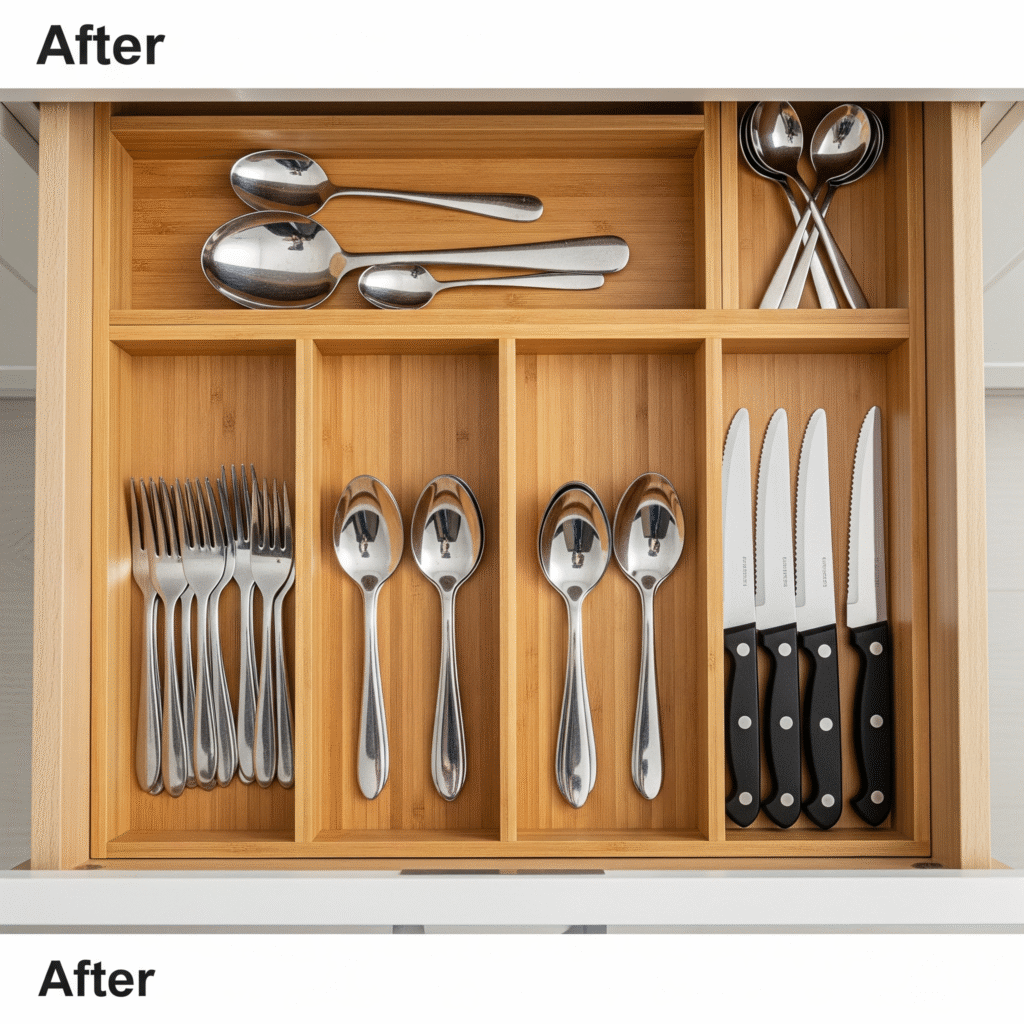
Step Three: The Power of Dividers and Inserts
Once you have your zones, it’s time to equip your drawers with the tools for success: dividers and inserts. A drawer without dividers is just a box waiting for chaos to return. The goal is to create a specific, snug home for every category of item. Adjustable dividers made of bamboo or plastic are fantastic because you can customize them to fit your drawers and your items perfectly. They are one of the most flexible storage solutions small kitchen enthusiasts can find. For cutlery, a standard tray works, but for utensils, a system of adjustable dividers often provides a more tailored fit for oddly shaped items.
From my experience, it’s the smaller items that create the most clutter. For things like chip clips, corn cob holders, and measuring spoons, use a system of small, individual bins within the larger drawer. This “bento box” approach keeps tiny items corralled and easy to find. There are many innovative products on the market designed to solve these exact problems. Companies like Joseph Joseph create brilliant, compact organizers that stack utensils diagonally or vertically to save an incredible amount of space. Investing in the right inserts is what takes your kitchen organization tiny house from good to great.
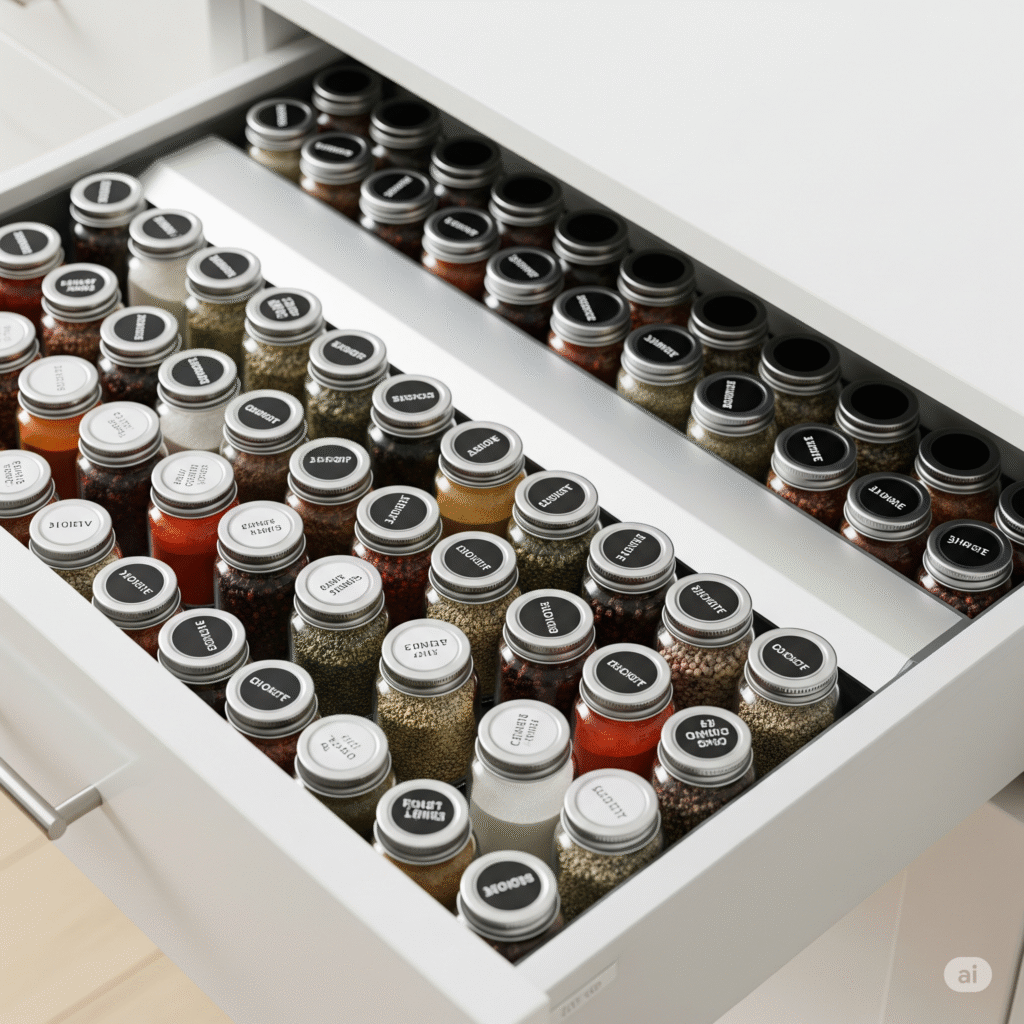
Step Four: Genius Storage Solutions for Deep Drawers and Sharp Knives
Deep drawers can be a blessing for storing bulky items like pots and pans, but they can quickly become a noisy, chaotic mess of stacked cookware. The solution is to store items vertically. Use sturdy, adjustable standing dividers to file your pots, pans, and lids upright. This allows you to slide one item out without having to lift the entire heavy stack, protecting your cookware from scratches and making access effortless. This is one of my favorite advanced kitchen organization tiny house hacks.
Knives should never be stored loose in a drawer—it’s dangerous for you and damaging to the blades. A brilliant storage solutions small kitchen alternative to a bulky countertop knife block is an in-drawer knife block. These are specially designed wooden or cork inserts with slots that hold your knives securely and safely within the drawer, keeping your counters clear. Similarly, for other items, think about nesting and stacking. A set of nesting mixing bowls and measuring cups that collapse into one another is a must-have for any tiny kitchen, saving an immense amount of space.
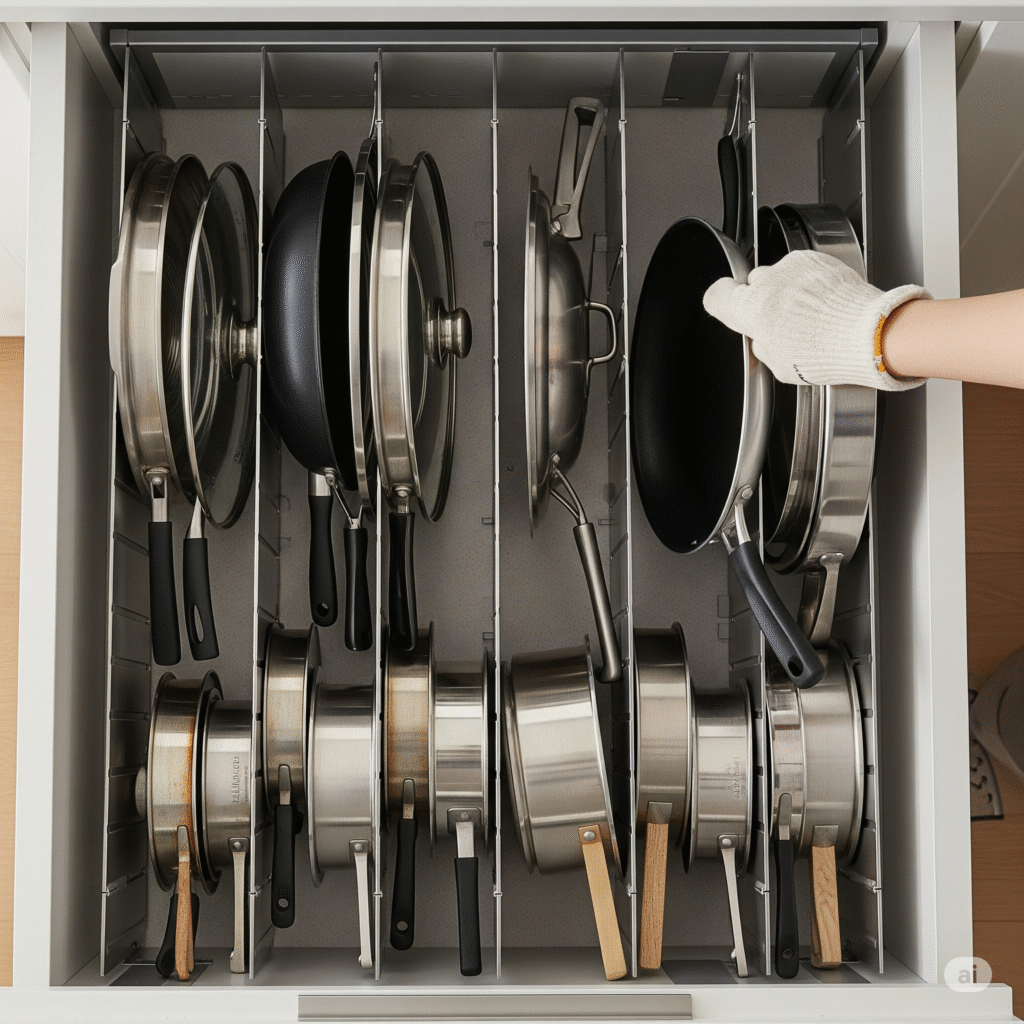
Final Thoughts: The Joy of a Functional Drawer
Perfecting your kitchen organization tiny house drawer system is one of the most satisfying projects you can undertake. It’s a small change that has a massive impact on your daily routine. The minutes you save not searching for a can opener add up. The small moment of peace you feel when you slide open a perfectly orderly drawer contributes to a calmer overall state of being. Your kitchen drawers are the workhorses of your tiny home; treat them with the respect and strategic planning they deserve, and they will pay you back every single day.
What’s In Your Junk Drawer?
Which of these kitchen organization tiny house tips are you excited to try first? What’s the most challenging item for you to organize in your kitchen? Share your thoughts and questions in the comments below!
Frequently Asked Questions
How do I organize a very deep kitchen drawer?
For deep drawers, think vertically. Use adjustable standing dividers to “file” items like baking sheets, cutting boards, pots, and pans. For other items, you can use stacking bins to create two levels of storage within the one deep drawer.
What is the best way to organize kitchen utensils?
Start by decluttering and keeping only what you use. Then, use adjustable drawer dividers to create custom compartments for each type of utensil. Store bulky items like ladles and large spatulas separately from your smaller everyday cutlery. Grouping by function is key.
How do I keep my “junk drawer” from coming back?
The best way is to eliminate it entirely by giving every single item a proper home. If you must have a miscellaneous drawer, use a drawer organizer with many small compartments to contain the chaos. Regularly (once a month) take 5 minutes to sort through it and put things back where they belong. It’s about maintenance!
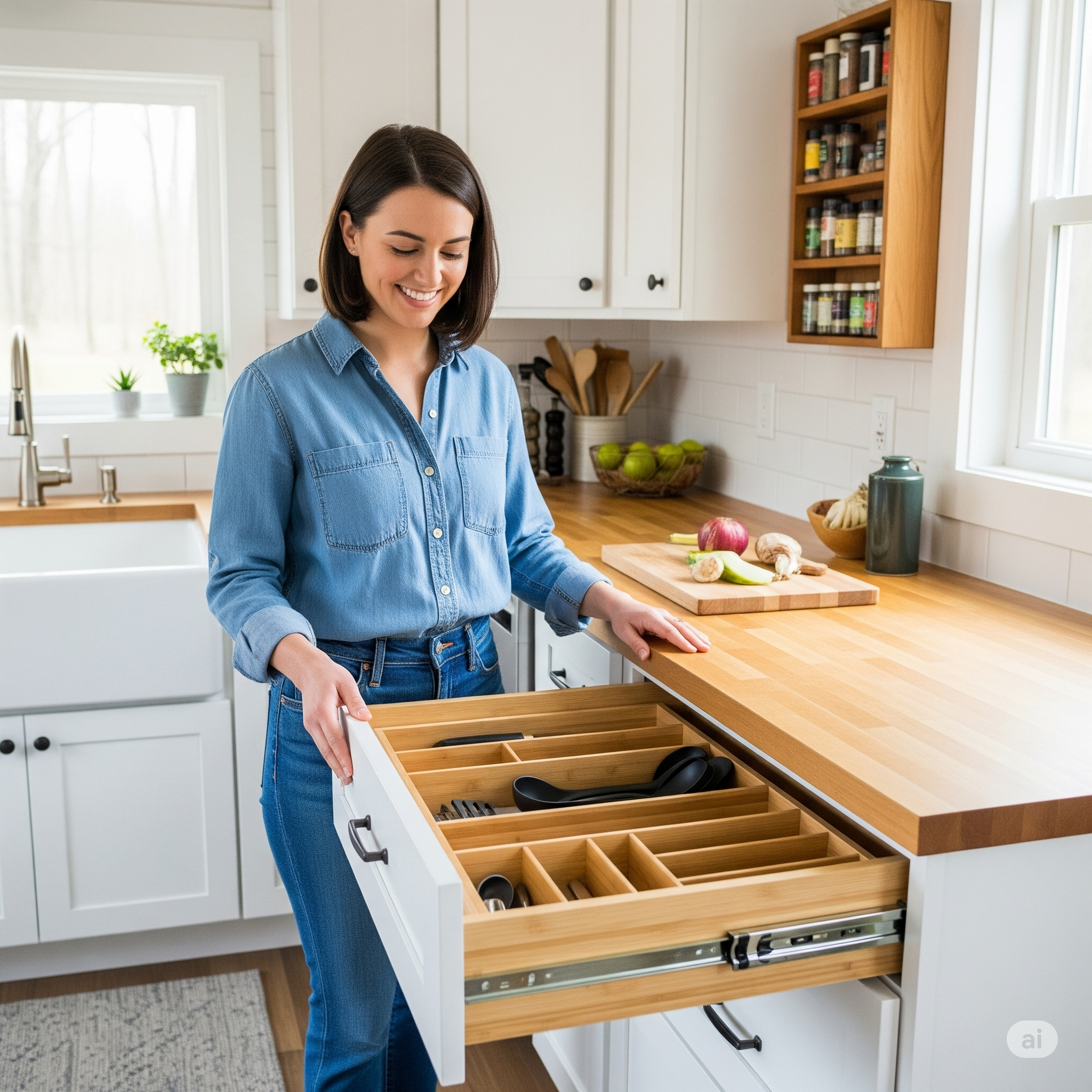
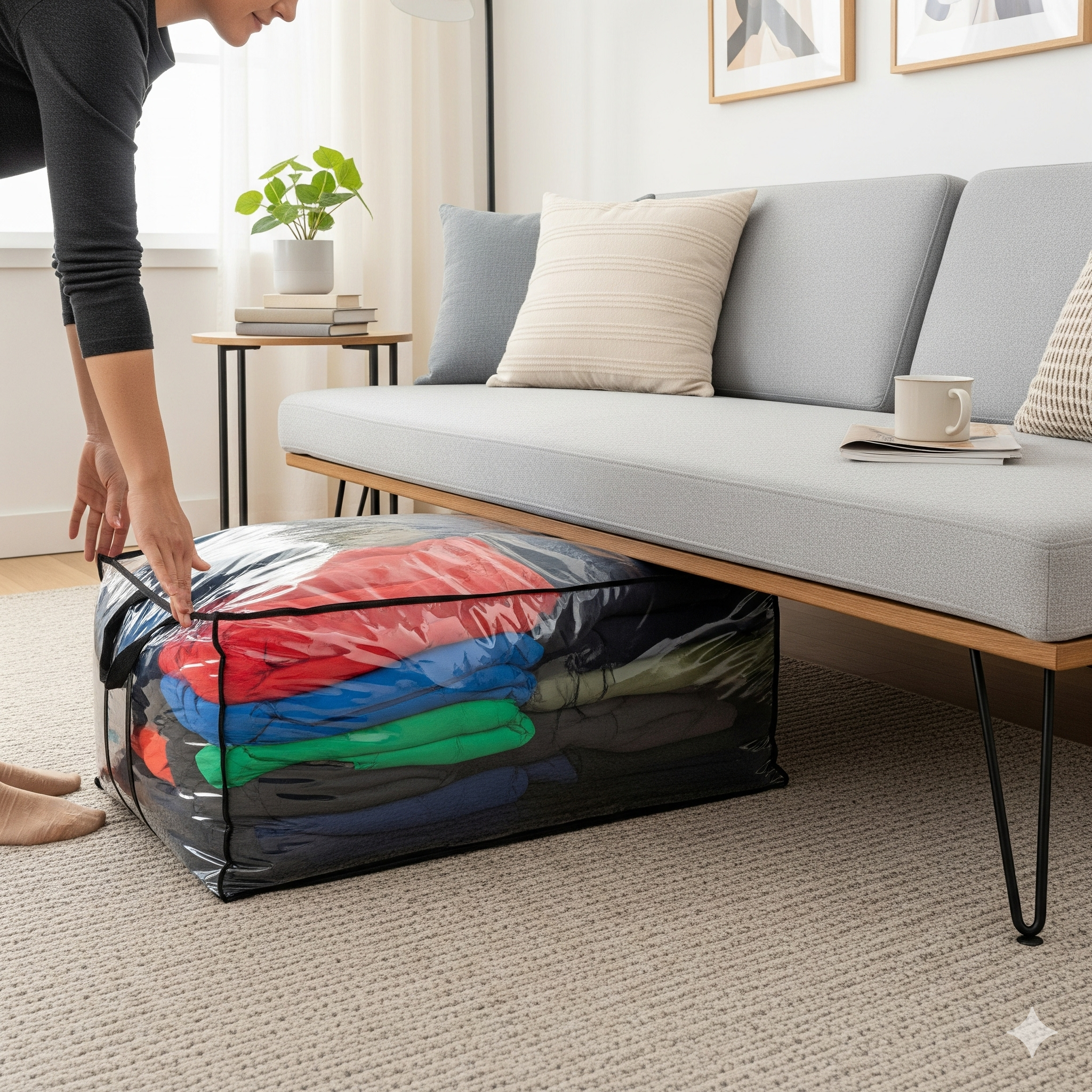
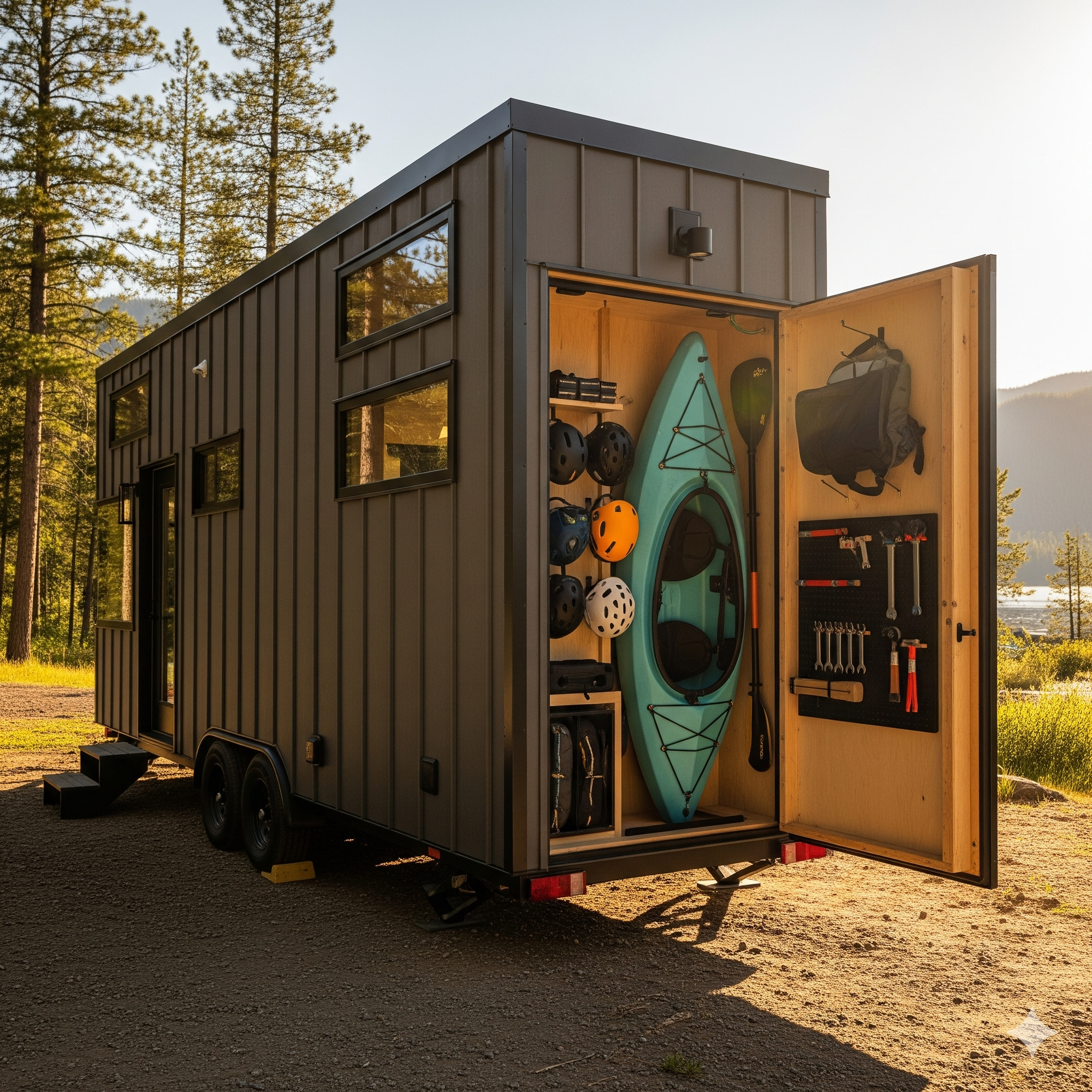
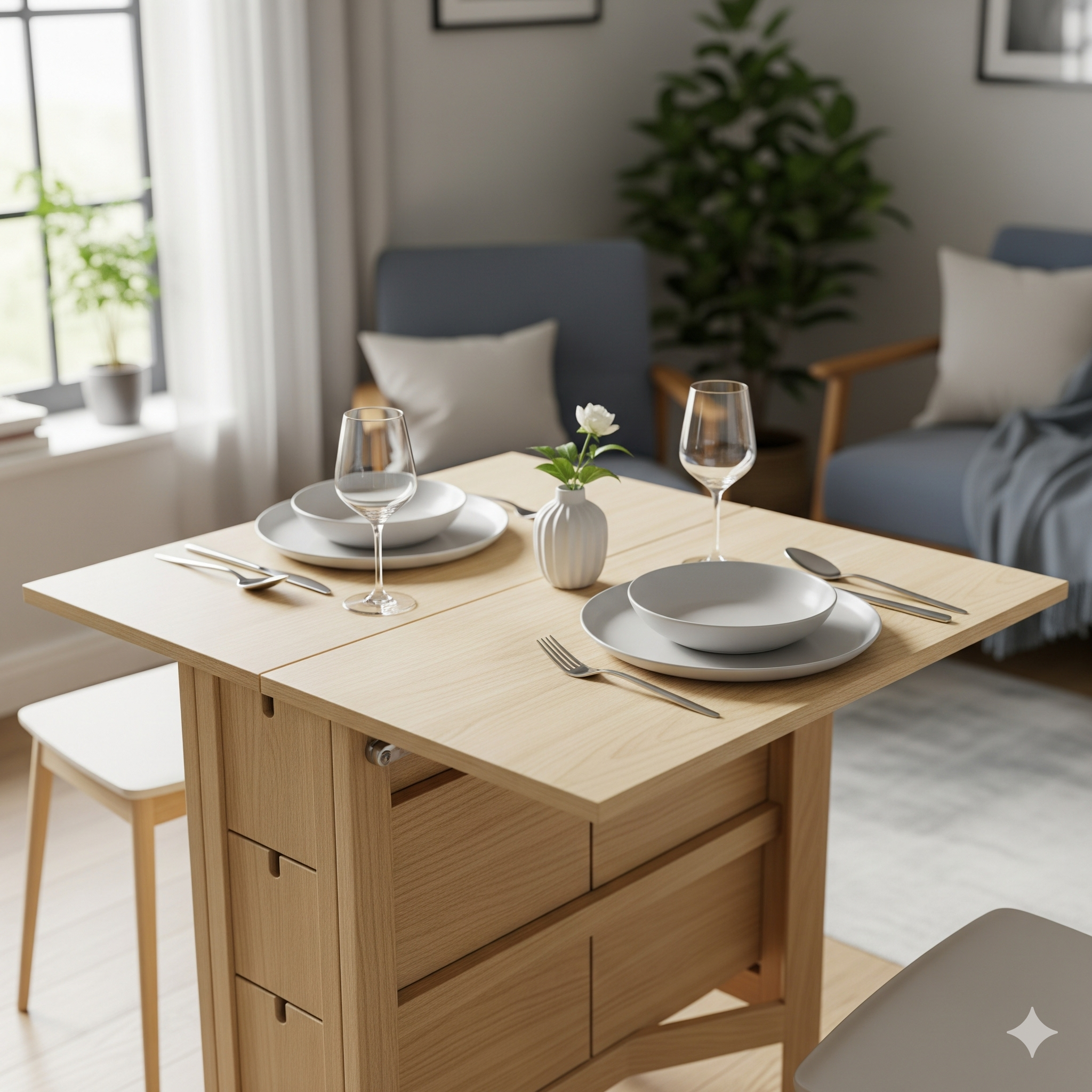
Post Comment